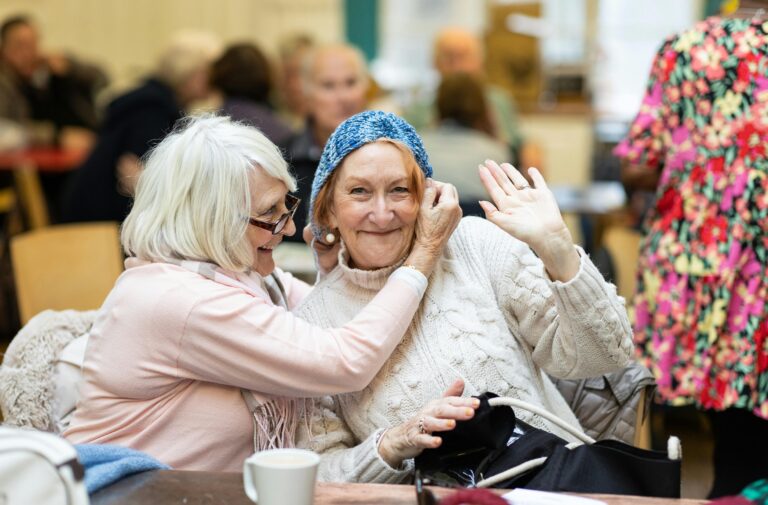Recently I watched a video on Youtube about Kaprekar’s Constant and I enjoyed it thoroughly. While I was lapping up the easy non-academic swim in the waters of an otherwise scary subject of Mathematics; I was drawing up parallels about ‘constants’ in our normal human life. This reflection stayed with me, and after spending some time thinking it through, I decided to share my thoughts in this blog. (Watch the video here if you’re interested: Kaprekar’s Constant)
In mathematics, Kaprekar’s constant is a fascinating phenomenon. Start with any four-digit number, arrange the digits in descending and ascending order, subtract the smaller number from the larger, and repeat the process. No matter which number you begin with (as long as not all digits are identical), you’ll eventually land on 6174—the “Kaprekar’s constant.” It’s an unchanging point in a cycle, a fixed value you’re bound to reach.
In many ways, human life mirrors this mathematical constant. Just as Kaprekar’s constant is the inevitable end of a process, certain people in our lives act as constants—always there, anchoring us through our ups and downs. But who are these constants, and why do we seek them out?
Who Are the Constant People in Our Lives?
Our constants are often those closest to us: parents, family members, spouses, children, and friends. These are the people who have known us through different stages of our life—our successes, failures, dreams, and heartbreaks. In a sense, they represent the emotional equivalent of Kaprekar’s constant: no matter how life rearranges us, no matter the chaos or order, they remain.
But do we choose them? In many ways, no. Parents and family are not chosen but given to us. Children arrive in our lives, binding us through love and responsibility. Friends and spouses, however, feel like more of a choice. Yet, over time, these relationships deepen and become essential. They become a part of the framework of who we are, just as unchanging as any constant.
Are These People with Us by Choice?
While some relationships—like family—are not our choice, the bonds we form with them often grow beyond circumstance. With friends and spouses, the initial connection may be by choice, but as they become constants, the idea of choice fades. They are there because they’ve woven themselves into the fabric of our being. In times of celebration and sorrow, we turn to them instinctively, not as an option but as a need. Much like how Kaprekar’s constant becomes an inevitable result of the number sequence, these people become inevitable in our emotional landscape.
Why Do We Need People to Have Our Back?
As social beings, humans have an inherent need for connection. Life can be unpredictable and overwhelming. We need people to ground us, to share the emotional load, and to be there when life turns challenging. Having someone we can always turn to makes life’s trials more bearable, offering security and comfort.
These constants provide more than just emotional support—they validate our experiences. Knowing someone will understand our feelings, whether we’re joyful or devastated, affirms our place in the world. They give us a sense of belonging and worth, like an anchor point that keeps us from spinning out of control.
The Psychological Need for Constants
From a psychological perspective, we seek out constants because they satisfy our fundamental need for stability and attachment. The theory of attachment, first developed by John Bowlby, suggests that human beings are wired to form deep bonds with others. These bonds offer safety and comfort, especially in times of distress. Just as Kaprekar’s constant gives a predictable endpoint, these relationships provide emotional stability amid life’s unpredictability.
Moreover, constants are a reflection of our need for continuity. We evolve, we grow, but we also need parts of our life to stay familiar. These people serve as mirrors to our past and anchors to our present, giving us a coherent sense of self. They offer an unchanging point of reference, much like the number 6174 in mathematics.
What If We Didn’t Have These Constants?
Imagine a life without these emotional constants—no parents, friends, or loved ones to turn to in moments of joy or sorrow. Without them, life would feel disorienting, much like a number sequence spiralling without reaching Kaprekar’s constant. We would lack the anchors that provide stability, continuity, and a sense of belonging. The absence of these constants would mean navigating life’s highs and lows alone, with no one to share the burden or celebrate our victories.
Emotionally, this could lead to feelings of isolation, insecurity, and a diminished sense of self-worth. Humans, by nature, are social beings who thrive on connection and support. Without these people, our emotional resilience would weaken, and we might find ourselves struggling to find purpose or direction in the vast, ever-changing landscape of life. The constants provide not just comfort but a foundation upon which we build our identities and face life’s challenges. Without them, life would lose its familiar, reassuring rhythms.
“True friends are like stars; you don’t always see them, but you know they are always there.” — Christy Evans
Much like Kaprekar’s constant, the people who stand by us through thick and thin are constants in the chaotic and dynamic world we live in. They are not just byproducts of our choices; they are emotional touchstones we cannot help but turn to. Just as in the math phenomenon, where the digits rearrange yet lead to the same conclusion, life rearranges our circumstances, but we find ourselves returning to the same circle of people who define our emotional security. These constants, whether by fate, choice, or necessity, form the foundation of who we are. And just like in math, it’s comforting to know that no matter how life’s digits get jumbled, there’s always a constant waiting for us at the end of it all.







Though Maths was never a subject I enjoyed, this blog was definitely enjoyable to read 🙃